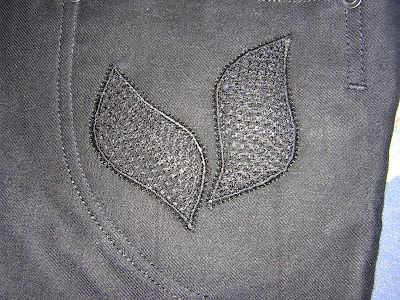So, without further ado, item #3 - NYU (not your usual) wrap top: Burda 01/2008, top 116
It's a blurry picture, sorry for that. I say it is not your usual wrap top because the panel in front that simulates a camisole is cut out of a black cotton/lycra, the rest is cut in a black and white knit and, to tie it on with my general black-white-red theme and in order to avoid too much black, I bound the entire neckline and the sleeves with red cotton lycra. I took a picture to show-you a close-up of the binding but I don't know how, the picture simply disappeared from my camera! How is that possible?
The ties were a bit too short (wished I read the reviews on PR and found out about that before I cut it... ) so I'm tying them in the back not the front. Also, I wish I didn't finish this top before Debbie Cook finished and published hers - look what an ingenious idea for the ties! This is great, Debbie, I'll surely use this for the next top.

And here is a better picture of the top. For a more extravagant look, it can be tied in front, with a bow.

Even with the application of binding, it still is a quick and rewarding project. But... it does require quite a lot of fabric, I had to be really creative about it as the black and white knit was a remnant.
Item #4 - NYU jeans

These are copied from my favorite RTW jeans. I had them for more than 4 years and I wore them to death. The most flattering jeans I've ever had. They will soon be unwearable and I plan to make at least two more pairs this year. I decided to make the first pair in black, with tone-on-tone topstitching and embellishment (see below for embellishment) because I wanted a dressier pair of jeans, one that I could wear with anything, including my Chanel-style jacket.
Why are these not your usual jeans?
First, because of the fabric - it is denim but made out of linen, viscose and elasthane. Looks pretty dressy and has a bit of sheen.
Second, because of the back pocket treatment. Stole an idea from another pair of RTW jeans and instead of applying patch pockets, I made inseam pockets (in the seam joining the back yoke to the back jean), with a pocket bag in the shape of a jean pocket and with only partial topstitching on the right side - take a look, pictures speak better than my English :)

The wrong side of the jeans, showing the pocket bag

And third, because of the embellishment done on the pocket, using heirloom/hemstitch techniques by machine. I found this great resource, containing a wealth of fact sheets (pdf format), I've printed almost all of them and made a separate file. They are so great that last night, when I finally got my copy of Handsewn by Machine (ordered at the end of December) I found I already knew almost everything in the book, thanks to these fact sheets. Here is a link to the techniques (you'll get a list of files not your usual website, but the name of those files is pretty relevant). And here is the link to the fact sheet that I've used - it is a heirloom hemstitched applique.
What I did: starch well (I finally found a good spray starch) a piece of organza, hooped it (if I don't hoop it, I get a lot of channeling), drew with chalk a rectangle that would fit into my machine (that rectangle was enough to cut out two leaves - I've used the leaf in the fact sheet as a template) and covered the rectangle with a Venetian hemstitch (sorry, but I cannot find a drawing of this hemstitch), using silk thread in the needle. The first rectangle took forever (you need some practice) but the second rectangle took only 30 minutes. Oh, and I couldn't find a wing needle here (I absolutely must find an online supply for wing needles and white silk thread, they are impossible to find here) and I used the largest needle that I have - size 11o. Worked just fine - the idea is to have a needle large enough to leave holes in the fabric.
Here is the unhooped rectangle, with the stitching done:

I then drew the leaf shapes on the rectangle, stitched around them with a straight stitch and cut them out, just outside the stitched outline. Used a spray adhesive (another thing that I must find online) to attach a piece of wash-away stabilizer to the back of the pocket. I then appliqued the leaves to the pocket. It is a corded applique and for that I've used my three hole cording foot, a strand of black pearl cotton and a satin stitch (2.5 mm width, 0.4 mm length) to stitch the leaf to the jeans. I then outlined the entire applique with a pinstitch. Isn't it beautiful?

And a close up of the front pocket. I used again snaps instead of rivets - can't find decent jean rivets here, but these snaps work just great.






